Sapienza Marie Skłodowska-Curie Fellows
The Marie Skłodowska-Curie actions ensure excellent and innovative research training as well as attractive career and knowledge-exchange opportunities through cross-border and cross-sector mobility of researchers, to better prepare them for current and future societal challenges. Sapienza University of Rome, as part of its mission to promote a research culture and an international research environment, is delighetd to host every year talented Marie Skłodowska-Curie Fellows at all stage of their career - be they doctoral candidates or experienced researchers - and encouraging transnational, intersectoral and interdisciplinary mobility.
In this page you can find some information about some of Sapienza Fellows:
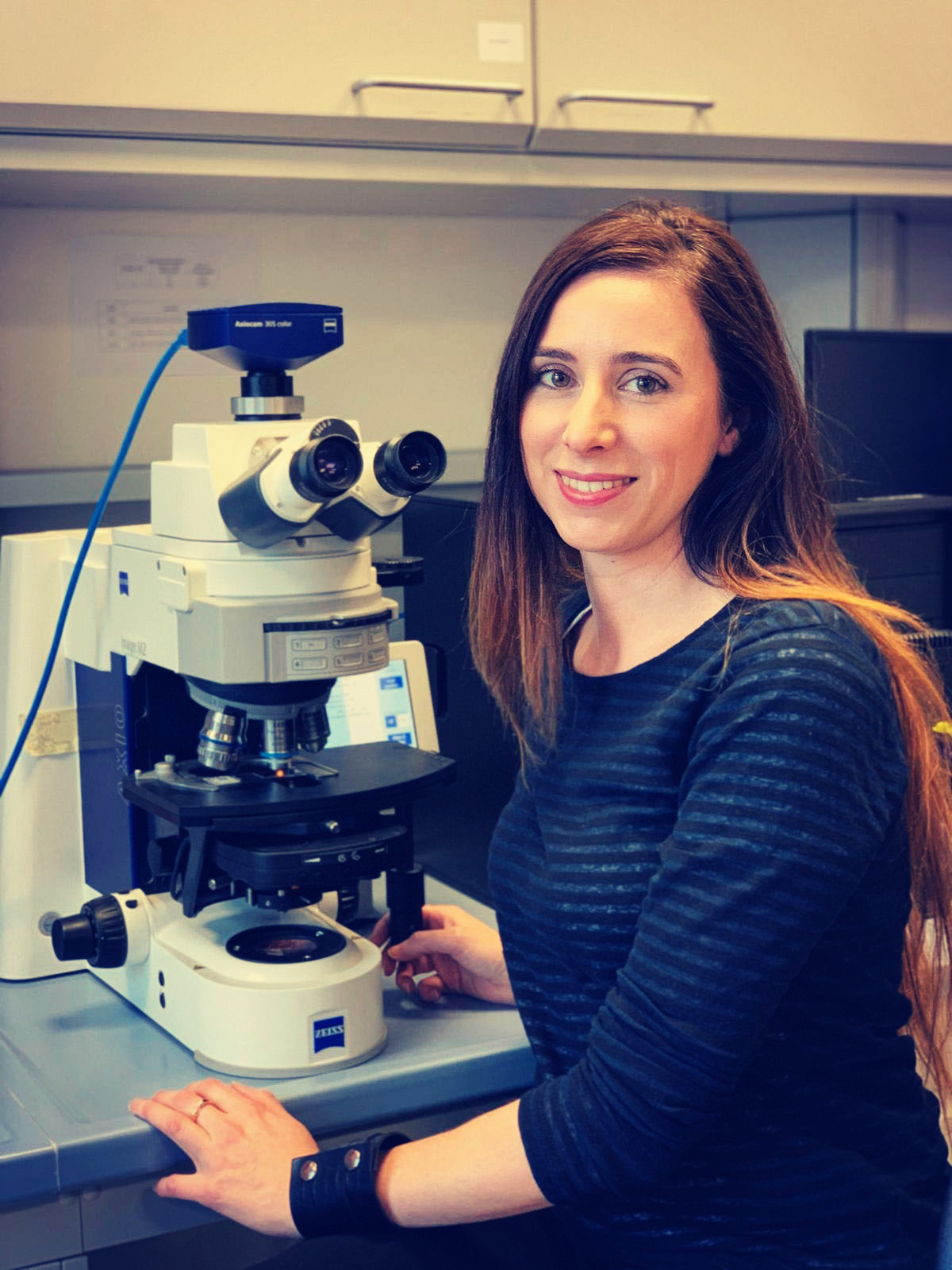 Elena Fiorin – project ‘Medical treatments in medieval leprosaria. Exploring healing remedies through dental calculus analysis’. Call reference H2020-MSCA-IF-2018
Elena Fiorin – project ‘Medical treatments in medieval leprosaria. Exploring healing remedies through dental calculus analysis’. Call reference H2020-MSCA-IF-2018
Elena Fiorin is a bioarchaeologist interested in palaeopathology, dental anthropology, and dental calculus analysis. She has been awarded a Marie Sklodowska-Curie Individual Fellowship for the project MEDICAL. This research explores the medical care offered to people who experienced leprosy and lived in leprosaria in Northern Europe during the medieval period (1100-1550 AD). Through the analysis of the human dental calculus, MEDICAL aims to capture unique insights which are now available from the latest techniques of archaeological science to address treatments for medieval leprosy studying organic and inorganic substances such as plants, mineral, and animal remains. The research will be carried out at the DANTE –diet and ancient technology laboratory- at the Department of Oral and Maxillo Facial Sciences (Sapienza University, Rome) and with the collaboration of the Department of Archaeology at Durham University (UK). Under the supervision of Professor Emanuela Cristiani, Professor Charlotte Roberts and Dr Kamal Badreshany, the Fellow will analyse the dental calculus employing Optical Microscopy, Scanning Electron Microscopy with X-ray microanalysis using Energy and Wavelength Dispersive X-ray Spectroscopy, and Inductively Coupled Mass Spectrometry.
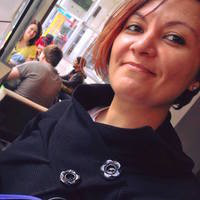 Angela Bernardo – project ‘Negotiating Religion: Coptic Orthodox diaspora communities. Shifting identities, needs, and relations from Egypt to Europe and back’. Call reference H2020-MSCA-IF-2019
Angela Bernardo – project ‘Negotiating Religion: Coptic Orthodox diaspora communities. Shifting identities, needs, and relations from Egypt to Europe and back’. Call reference H2020-MSCA-IF-2019
Angela Bernardo was awarded with a Marie Skłodowska-Curie Individual Fellowship for the project NEGOTIA. Her research will be developed at the Dipartimento di Storia Antropologia Religioni Arte Spettacolo (SARAS) under the supervision of Alessandro Saggioro, in collaboration with Ghada Barsoum of the Public Policy and Administration Department (PPAD) of the American University in Cairo and Giovanni Maltese of the Institut für Missions-, Ökumene- und Religionswissenschaft of the University of Hamburg. NEGOTIA aims to analyse the Coptic Orthodox diaspora communities in Europe with specific regard to three key aspects: identities, needs, and relations, in order to reconstruct the theoretical-practical framework of religious mediation. At the core of NEGOTIA there are three case studies which will be studied in close connection: the Church of St. Giorgio Megalomartire in Rome, the Coptic Orthodox Cultural Center (COCC) in Cairo and the Church of St. Petrus, der letzte Märtyrer in Hamburg. The goal of NEGOTIA is to examine the origins and history of these communities, their cultural heritage and the peculiarities of their religion, but above all the dynamics of deconstruction and reconstitution of the material, emotional and relational dimensions experienced by the migrant communities in the pathways from their homeland to abroad and back.
 Carmelo Russo – Project “Religious Super-Diversity in Cape Town. Dynamics of Leadership and Territorialization Through Religious Spaces in the Migration Process –RELCAPETOWN”. Call reference H2020-MSCA-IF-2019.
Carmelo Russo – Project “Religious Super-Diversity in Cape Town. Dynamics of Leadership and Territorialization Through Religious Spaces in the Migration Process –RELCAPETOWN”. Call reference H2020-MSCA-IF-2019.
Carmelo Russo gained a Marie Skłodowska-Curie Individual Fellowship with the project RELCAPETOWN. The research will be carried out at the Department of History, Anthropology, Religions, Arts, Performing Arts (SARAS) of Sapienza University under the supervision of Prof. Laura Faranda. Through an anthropological fieldwork, the project will investigate the interaction between religions and migration in specific areas of Cape Town, South Africa, from the perspective of the “religious super-diversity” notion. It considers not merely the diversity of cultures brought by migration, rather their visibility in cities with more diversities and multiple identities, involving race, ethnicity, legal status, age, and gender, but also generating conflicts and exchanges of knowledge among cultures. Added to the “religious super-diversity” is the spatial relationship between religious communities, the urban environment, and the public sphere. This project aims to highlight, through the lens of religious super-diversity, immigration as a standard “way of life”, spreading in both North and South of the world, subtracting it from the “idea of emergence.”
Emily Pierin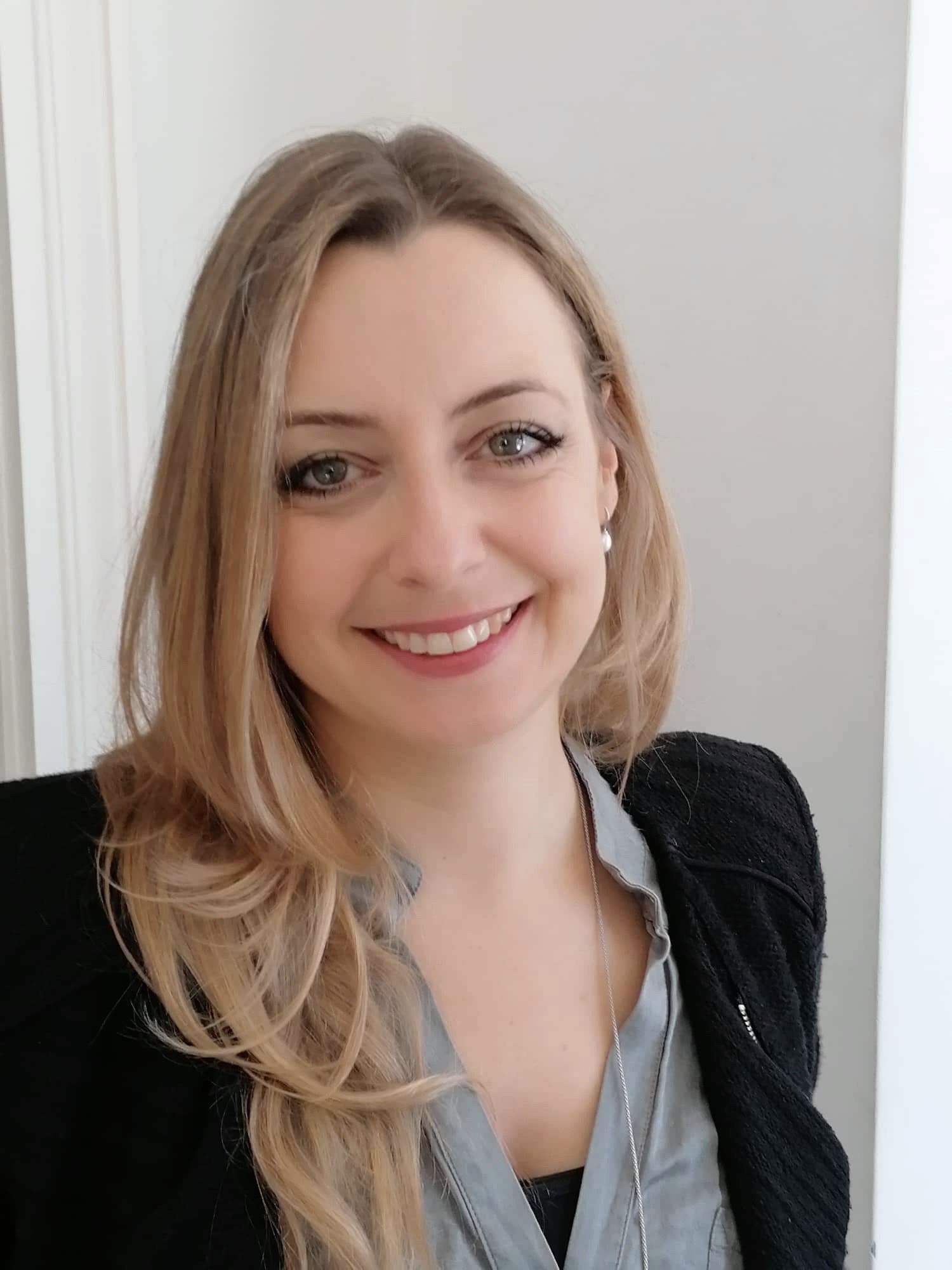 i – Project “Transnational Healing: Therapeutic Trajectories in Spiritual Trance" - THETRANCE. Call reference H2020-MSCA-IF-2019
i – Project “Transnational Healing: Therapeutic Trajectories in Spiritual Trance" - THETRANCE. Call reference H2020-MSCA-IF-2019
Emily Pierini was awarded a Marie Skłodowska-Curie Individual Fellowship to carry out he project “THETRANCE – Transnational Healing: Therapeutic Trajectories in Spiritual Trance”. The project analyses the therapeutic aspect of learning spiritual trance practices in the Vale do Amanhecer Christian Spiritualist Order from a transnational prospective through research in Brazil, United States, Italy and Portugal. The research will be developed in collaboration with the Department of History, Anthropology, Religions, Arts, Performing Arts (SARAS) of Sapienza University of Rome, the Department of Anthropology of Universidade Federal de Santa Catarina in Brazil and the Institute of Social and Cultural Anthropology of the University of Oxford.
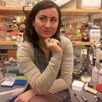
Simona Giunta – Project “Mechanisms that maintain centromere DNA repeats stability in human cells - Centromere Stability”. Call reference H2020-MSCA-IF-2018.
Simona Giunta has been awarded a Marie Skłodowska-Curie Individual Fellowship with her project Centromere Stability. The project, which focuses on the mechanisms that maintain human centromere stability and the consequences of centromere dysfunction in driving cancer and ageing, will be implemented at the Department of Biology and Biotechnology "Charles Darwin" under the supervision of Prof. Isabella Saggio. Using an innovative technique developed by the researcher herself that combines advanced FISH technology with high-resolution images applied to human centromeres, it was found that the centromere-specific histone variant CENP-A, and associated proteins CENP-C/T, prevent centromeres instability and that this functionality is compromised in tumor cell lines and in primary senescent cells. The aim of the project is: 1) to understand the mechanisms that maintain centromere repeats stability; 2) to screen for novel factors that contribute to centromere stability in human cells; 3) an integrative interdisciplinary analysis using bioinformatics and genome-wide data to map the DNA damage response pathway(s) that operate at human centromere repeats; 4) to study the consequences of centromere instability in relation to ageing and cancer. The research will unveil a novel conceptual framework to explain the fragility of repetitive centromere DNA in human cells and its consequences on cell physiology and diseases.
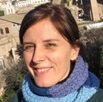
Arianna Campiani – Project “Understanding ancient urbanism: site planning and unintended consequences of the Classic Maya city as a model - MAYURB”. Call reference H2020-MSCA-IF-2018.
Arianna Campiani has obtained a Marie Skłodowska-Curie Individual Fellowship with the project MAYURB, which will be realised in collaboration with Prof. Luisa Migliorati at the Department of Ancient World Studies. The project will study ancient urbanism using the Classic Maya Period as a model to understand city inception and expansion through time, while considering the diverse actors involved in its planning, use and transformation. The project is developed around three main axes: 1) the construction of a GIS platform to join archaeological, architectural and morphological data and to outline the physical reality in which the ancient Maya lived; 2) archaeological excavations at Palenque (Mexico) in areas where it is more likely to uncover infrastructural works and their relative chronology; 3) an analysis on the extent of authority in site planning and the agency of other urban actors with an interdisciplinary theoretical focus that spans from urban to anthropological theory. The methodological approach and theoretical contribution developed with MAYURB aim at providing a thorough understanding of the planning process and city performance in antiquity, beyond the time period and the geographical location in question. The project foresees a unique interchange between UNAM-Mexico, Sapienza University of Rome and the Research Center of the Slovenian Academy of Arts and Sciences.
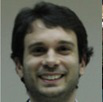
Alessandro Surrente – Project “Strain Engineering of Light-Emitting Nanodomes - SELENe”. Call reference H2020-MSCA-IF-2018.
Alessandro Surrente gained a Marie Skłodowska-Curie Individual Fellowship with the project SELENe. The research will be carried out at the Department of Physics under the supervision of Prof. Marco Felici. The project will investigate the possibility of using hydrogen irradiation to control the optical and electronic properties of transition metal dichalcogenides (TMDs). TMDs, which like graphene can be reduced to the thickness of a single atomic layer, are of great interest for the realization of novel optical devices. The idea behind SELENe is based on the recent discovery – made by Prof. Felici’s research group, led by Prof. Antonio Polimeni – that hydrogen irradiation of TMD leads to the formation of “nanobubbles” with monatomic thickness, which function as efficient light emitters and that can be positioned on a photonic device as desired. This ability, combined with the possibility of modifying the energy of photons emitted by the material which leads to an elastic deformation in nanobubbles, makes this system of great interest for applications in the field of photonics and optoelectronics.
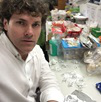
Dusan Boric – Project “Cementochronology Unravels Seasonality in Prehistory - CUSP”. Call reference H2020-MSCA-IF-2018.
Dusan Boric has been granted a Marie Skłodowska-Curie Individual Fellowship with the project CUSP. The project, which will be carried out at the Department of Environmental Biology in collaboration with Prof. Alfredo Coppa, will focus on ancient teeth and how they can preserve important information about past lives and deaths. One of the possible avenues for utilizing this plethora of information harbored in teeth tissues is by studying the phenomenon known as Tooth Cementum Annulation (TCA)—formation of alternating translucent and opaque bands observed in the cementum, the outer layer covering roots in teeth. Like with growth lines observed in trees that can serve to determine their ages, counting alternating increments in cementum that represent growth (summer) and dormant (winter) seasons can provide accurate estimates of age- and season-at-death in humans and animals. CUSP project will apply TCA analysis on human and red deer teeth from the Mesolithic-Neolithic sites in the Danube Gorges of the Balkans in order to determine the scheduling of seasonal activities in this area during the transition from foraging to farming. The training-through-research during the outgoing phase will be undertaken at New York University and the acquired knowledge will be transferred to the Sapienza University of Rome.

Angela Cinalli – Project “Following the paths of itinerant professionals of the arts in the epigraphic sources of the Hellenistic period - PTANOIS POSIN”. Call reference H2020-MSCA-IF-2018.
Angela Cinalli obtained a Marie Skłodowska-Curie Individual Fellowship with the project PTANOIS POSIN. The research will be realized at the Department of Ancient World Studies under the supervision of Prof. Roberto Nicolai and in collaboration with the Center for Hellenic Studies (Harvard University). PTANOIS POSIN will study a cultural phenomenon of great impact: the itinerant professionals of literacy and music in the epigraphic sources of the Hellenistic age. Through the support of the Digital Humanities, it will be possible to narrate in a virtual environment the itineraries, stories and careers of the so-called “poeti vaganti” with the aim of rethinking the cultural framework of the Hellenistic period, in light of a cultural and popular phenomenon that run parallel to court literature.
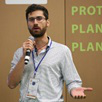
Moreno Di Marco – Project “PROTECTNICHE - Understanding the role of intrinsic and extrinsic drivers of loss in species niches, to inform conservation planning under climate change”. Call reference H2020-MSCA-IF-2017.
Moreno Di Marco won a Marie Skłodowska-Curie Individual Fellowship with the project PROTECTNICHE. The project, presented by the researcher of the Department of Biology and Biotechnology in collaboration with Dr Carlo Rondinini, aims at disentangling the impacts of humans, climate change, and life history on the climatic niches of terrestrial mammals. The goal is to inform a conservation strategy for preventing future species declines. The extinction of species is the most alarming consequence of global biodiversity decline, with potential dramatic effects on our economy and well-being. The current rate of climate change is predicted to further increase extinction risk, hence there is urgent need to anticipate species decline rather than reacting to it. The breadth of a species’ niche - the set of environmental conditions in which the species can persist - is the key ecological trait that allows adaptation to environmental change, but is often ignored in conservation planning applications. This is a research area of primary interest in Europe, given the European Commission has recognised that business opportunities from investing in biodiversity conservation could be worth US$ 2-6 trillion by 2050.

Prabhat Raj Dahal – Project “Inspire4Nature: International training at the Science-Policy Interface for Researchers in Europe, for Nature”. Call reference H2020-MSCA-ITN-2017.
Prabhat Raj Dahal is an Early Stage Researcher (ESR) at the Department of Biology and Biotechnology (BBCD) under the Inspire4Nature ITN project, coordinated by prof. Carlo Rondinini. His project will explore the degree to which Red List Assessments can be improved and made more rigorous and consistent by including more quantitative data using mammals and birds to test different approaches. The project will aim to improve the methods used to develop maps of the Extent of Suitable Habitat (ESH).

Ivon Cuadros Casanova – Project “Inspire4Nature: International training at the Science-Policy Interface for Researchers in Europe, for Nature”. Call reference H2020-MSCA-ITN-2017.
Ivon Cuadros Casanova is an Early Stage Researcher (ESR) at the Department of Biology and Biotechnology (BBCD). Her fellowship is part of the Inspire4Nature ITN project, coordinated by prof. Carlo Rondinini. The main objective of her project is to explore the positive and negative interactions between selected goals and targets of the UN resolution “Transforming our world: the 2030 Agenda for Sustainable Development” to understand to what extent the achievement of some goals will affect the others, especially the ones directly or indirectly related to biodiversity conservation.
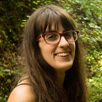
Carmen Soria – Project “Inspire4Nature: International training at the Science-Policy Interface for Researchers in Europe, for Nature”. Call reference H2020-MSCA-ITN-2017.
Carmen Soria is an Early Stage Researcher (ESR) and she has been enrolled at the Global Mammal Assessment (GMA) programme at the Department of Biology and Biotechnology (BBCD). Her fellowship is part of the Inspire4Nature ITN project, coordinated by prof. Carlo Rondinini. Her project will aim at identifying those life-history traits that are related to higher sensitivity to climate change. These traits will be then grouped into archetypes, and then combined with spatially explicit climatic data. These data will be used to identify species that are likely to become at risk in the near future, if certain environmental conditions will occur, thus helping future Red List assessments.
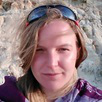
Maria Lumbierres – Project “Inspire4Nature: International training at the Science-Policy Interface for Researchers in Europe, for Nature”. Call reference H2020-MSCA-ITN-2017.
Maria Lumbierres is an Early Stage Researcher (ESR) under the ITN project Inspire4Nature. She has been enrolled at the Global Mammal Assessment (GMA) programme at the Department of Biology and Biotechnology (BBCD). Her project will use species data for Key Biodiversity Areas (KBAs) in at least 10 Biodiversity Hotspots worldwide, including data for birds, other vertebrates and selected plant and invertebrate groups, to: understand the physical, environmental and human variables affecting KBA distribution; explore the utility of Extent of Suitable Habitat maps for identifying KBAs under the different KBA, and use the results of the previous two modules to develop predictions of where as-yet-undescribed KBAs may exist in order to focus future KBA identification efforts.

Erika Ronchin – Project “DePICting the interior of active VOLCanoes to reduce volcanic hazards: application to the present unrest at Nevado del Ruiz (Colombia) – PICVOLC”. Call reference H2020-MSCA-IF-2017.
Erika Ronchin won a Marie Curie Individual Fellowship with the project PIVLOC. The project presented by the researcher of the Department of Earth Sciences in collaboration with prof. Maurizio Battaglia, aims to create a detailed representation of the source of volcanic unrest through the development of a methodology that integrates a variety of geophysics data, such as seismic, gravity, and deformation, with 3D numerical inversion. Being able to infer changes in the magmatic system and the ascent of magma during volcanic unrest – i.e., the changes in seismicity and ground deformation that may precede an eruption - is important for improving eruption forecasts and hazard preparedness. More than 500 million people live within the range of volcanoes whose activity can have a disastrous impact. Even modest eruptions, such as Ruiz’s eruption (Colombia) in 1985, can destroy entire villages, killing thousands of people. Because of its high risk, the current unrest at Ruiz will be the case study used to implement, calibrate, and verify this original approach.

Marina Gallinaro – Project “ASArt-DATA - Ancient Saharan Art – Decoding Art through Theoretically-sounded Archive”. Call reference H2020-MSCA-IF-2017.
The AsArt-DATA project presented by the researcher Marina Gallinaro, in collaboration with Savino di Lernia of the Department of Ancient Sciences and in synergy with the Cotsen Institute of Archaeology, University of California, Los Angeles (UCLA) aims to provide a flexible tool for the in-depth analysis of the corpus of the Saharan rock art of the pastoral communities ca. 6300-850 BCE. Relying on the complete archive of Acacus and Messak massifs (SW Libya), and on other regions, this Rock Art will be investigated with an original multidisciplinary and systematic approach combining Archaeology, Anthropology, Visual Studies, and Digital Humanities. A cornerstone of ASArt-DATA is the building of the open access webAtlas of Libyan Saharan rock art, customized for research, CRM, dissemination and communication. The actions of ASArt-DATA will strengthen the connection between archaeological and anthropological studies and between academy and society, thanks to the deployment of the underdeveloped potential of Rock Art.
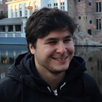
Richard Brito – Project “FunGraW - Fundamental physics in the era of gravitational-wave astronomy”. Call reference H2020-MSCA-IF-2017.
Richard Brito was granted a Marie Curie Individual Fellowship with the project FunGraW focused on the detection of gravitational waves and the answers that they can provide to fundamental questions such as the nature of compact objects (neutron stars and black holes) and dark matter and ultimately to contribute to the recent theoretical efforts in developing the full scientific potential of the newborn field of gravitational wave astronomy. The mains goals of his research, carried out under the supervision of Prof. Pani at the Department of Physics, aim at developing tools to understand how gravitational wave detections might be able to probe the existence of particles beyond the Standard Model of particle physics through their interaction with black holes and neutron stars; and to understand to which extent gravitational waves can provide conclusive evidence for the existence of black holes or rule out alternative models.
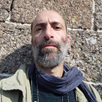
Marco Di Branco – Project “OROARAB -The Orosius Arabicus and the Arab Vision of the Graeco-Roman World: Researches on the Mediterranean Responsiveness”. Call reference H2020-MSCA-IF-2017.
Marco Di Branco, of the Department of History, Cultures, Religions, won a Marie Curie Individual Fellowship, with the project OROARAB, in collaboration with Prof. Gaetano Lettieri and the American Academy of Beirut. The core of this project is the complete English translation with an historical commentary of the Kitāb Hurūšiyūš, a medieval Arabic version of the Historiae adversus paganos by Paulus Orosius. The sole manuscript, discovered in 1930 by Giorgio Levi della Vida, finds itself in the Rare Book and Manuscript Library of the Columbia University in New York and was recently edited by mayte Penelas, with an extensive introduction, index and bibliography, but without any translation and historical commentary. The Kitāb Hurūšiyūš is a work of extraordinary importance which left a deep mark on Western Islamic historiography, coming to constitue, for many Arab intellectuals, a unique and fundamental access door to the history of the Graeco-Roman world.
Marina Selivanova - Project “BBDIAG: Blood Biomarker-based Diagnostic Tools for Early Stage Alzheimer’s Disease”. Call reference: H2020-MSCA-ITN-2016
Marina Selivanova was born and grew up in St. Petersburg, Russia, and is an ESR Early Stage Researcher (ESR) at the Department of Physiology and Pharmacology, recruited under the “BBDiag” project. Prior to getting her Master’s degree in Interdisciplinary Neuroscience (2015) at the Goethe University in Frankfurt am Main, she has earned a Diploma with a major in Clinical Psychology at the St. Petersburg State University (2011). In her research activities, she addressed the neurobiological basis of mental disorders with behavioural and neuroimaging methods. She believes that the development of new strategies of early biomarker-based diagnostics, would significantly postpone and mitigate the Alzheimer’s disease manifestation, and reduce associated emotional, psychological and financial burden for the affected individuals and their relatives. The research activies will be conducted under the supervision of prof. Claudio Babiloni.
Jessica Janson - Project “BBDIAG: Blood Biomarker-based Diagnostic Tools for Early Stage Alzheimer’s Disease”. Call reference: H2020-MSCA-ITN-2016.
Jessica Janson was born in Gotha, Germany and she is ESR Early Stage Researcher (ESR) under the “BBDiag” project. She has a degree as graduate engineer in Biomedical Technology from the University of Applied Science Lübeck (2012). Her Masters degree in Medical Biotechnology was awarded by the University of Rostock (2015). In her diploma project she adapted commercial microarray technology for use in micro gravity with EADS Astrium (Immenstaad at Lake Constance), which resulted in two patents. Her second graduate project was developing element and structural analysis methods for Cholesterol and oxalic acid with Celisca (Rostock). She has a passion for combining technology and human biology and found in this project the means to do both. Her supervisor is prof. Claudio Babiloni, at the Department of Physiology and Pharmacology.
Ada Cortés Vicente- Project "TETRASTYLON – Definition, analysis and interpretation of a new typology of the roman house: the ‘Tetrastyle courtyard house’ a domus with a hybrid cultural conception sheltered by a global civilization of antiquity”. Call reference: H2020-MSCA-IF-2016
Ada Cortés Vicente was granted a Marie Curie Individual Fellowship with the project Tetrastylon. This project is designed to create the scientific basis for the identification and definition of a new type of Roman domus. This typological feature is the result of a hybrid house scheme between the Greek and Roman conceptions of housing. The new typology has been observed in different Roman cities with a Greek past, in different geographical contexts and chronologies, but it has not been analysed enough by Roman domestic architecture studies. It is therefore necessary to establish and document accurately the various households that existed in antiquity to better understand the first stage of any cultural society. In this case a house that has a cultural exchange for the formation of its structure and its role in the society in which it has been developed. The research will be conducted under the supervision of prof. Luisa Migliorati, at the Department of “Scienze dell’antichità”.
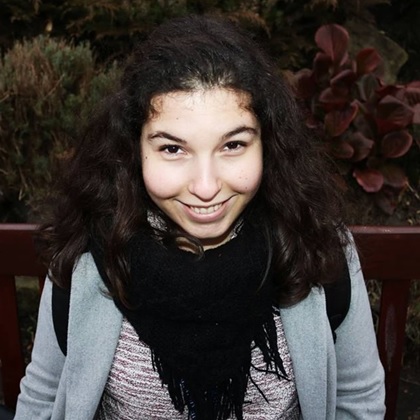 Maria Casacão - Project "CircRTrain". Call reference: H2020-MSCA-ITN-2016
Maria Casacão - Project "CircRTrain". Call reference: H2020-MSCA-ITN-2016
Maria Casacão is an ESR Early Stage Researcher (ESR) at the Department of Biology and Biotechnology and she has been recruited under the "CircRTrain" project. The main objectives of the project are to clarify whether FUS, an RNA binding protein, controls the biogenesis of circRNAs with a relevant function in motoneuron activity and to investigate whether dysregulation of motoneuron (MN) specific circRNAs have an impact on ALS pathogenesis. Specific emphasis will be devoted to study the subcellular localization of MN-specific circRNAs in in vitro differentiated motoneurons through in situ hybridization (ISH) and to analyse whether their localization is affected in FUS mutant cells. The research will be conducted under the supervision of prof. Irene Bozzoni.
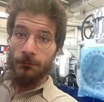 Marco Scuderi - Project "FEAT - The role of Fluid pressure in EArthquake Triggering". Call reference: H2020-MSCA-IF-2014
Marco Scuderi - Project "FEAT - The role of Fluid pressure in EArthquake Triggering". Call reference: H2020-MSCA-IF-2014
Marco Maria Scuderi won a Marie Curie Individual Fellowship with the project FEAT, a comprehensive experimental study of the role of fluid pressure in earthquake triggering . The research is carried out under the supervision of prof. Cristiano Collettini and its aim is to document the evolution of fault friction parameters as a function of fluid overpressure using a world-class rock deformation apparatus. The laboratory experiments will build on the characterization of fault zone structure, fluid flow, and deformation processes, which will be reconstructed from careful field evaluations of ancient faults that represent exhumed analogues of seismically active structures. An important part of this work will be the interaction with the energy industry to investigate the role of fluids in induced seismicity.
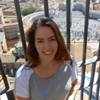 Matilde Trabuco - Project "X-probe - Advanced XFEL and Synchrotron based Probes of Protein Structure and Dynamics". Call reference: H2020-MSCA-ITN-2014
Matilde Trabuco - Project "X-probe - Advanced XFEL and Synchrotron based Probes of Protein Structure and Dynamics". Call reference: H2020-MSCA-ITN-2014
Matilde Trabuco is an Early Stage Researcher (ESR) at the Department of Biochemical Science and she has been enrolled at the research doctorate in Biochemistry. Her research focuses on synthesis/modification of photosensitive compounds and their screening. She will be trained in protein engineering, protein crystallography procedures as well as sample preparation for time-resolved X-ray spectroscopy under the supervision of prof. Alessandra Bonamore. The main objective is to develop intellectual properties and pave the way to the commercialization of the end products of the research. This fellowship is part of the X-probe ITN project, coordinated by prof. Beatrice Vallone, that builds upon the transformative opportunities created by existing X-ray sources and new sources soon to be operative in Europe.
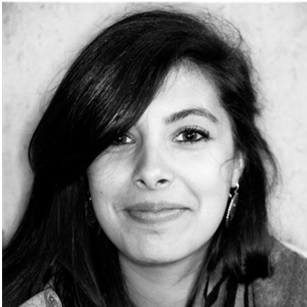 Cécile Exertier - Project "X-probe - Advanced XFEL and Synchrotron based Probes of Protein Structure and Dynamics". Call reference: H2020-MSCA-ITN-2014
Cécile Exertier - Project "X-probe - Advanced XFEL and Synchrotron based Probes of Protein Structure and Dynamics". Call reference: H2020-MSCA-ITN-2014
Cécile Exertier is an ESR at the Department of Biochemical Science. She has been enrolled at the research doctorate in Biochemistry and her fellowship is part of the X-probe ITN project, coordinated by prof. Beatrice Vallone. Her project focuses upon the structural dynamics of neuroglobin and bacterial P450 using both time-resolved WAXS and Laue diffraction. This research will involve training on protein engineering and crystal structural analysis. Emphasis will be given to the preparation of crystals suitable for time resolved diffraction and for trapping and detection of reaction intermediates in other heme proteins (e.g. Myoglobin, hemoglobin).
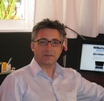 George Georgiou - Project "SAT STABILIS - Nonlinear Sampled-data Attitude Stabilization of Underactuated Spacecraft". Call reference: H2020-MSCA-IF-2014
George Georgiou - Project "SAT STABILIS - Nonlinear Sampled-data Attitude Stabilization of Underactuated Spacecraft". Call reference: H2020-MSCA-IF-2014
George Georgiou was granted a Marie Curie Individual Fellowship with the project SAT STABILIS. The aim of the project is to develop novel control algorithms for three-axis attitude stabilization of an underactuated spacecraft in actuator failure mode without significant performance degradation with the remaining control torques. Theoretical investigations will be conducted for ad-hoc digital solutions based on equivalent discrete models, finite computability and multirate control laws, permitting to impose digital performance objectives and give solutions to the intractable continuous-time problems. The results are exected to be applicable also to general classes of underactuated mechanical systems and other related control problems. The research will be conducted under the supervision of prof. Salvatore Monaco, at the Department of Computer, Control, and Management Engineering.
Paolo Pani - Project "AstroGRAphy - NGravity, Fundamental Physics and Astrophysics: The Missing Link". Call reference: FP7-PEOPLE-IEF-2013
Paolo Pani was granted a Marie Curie Intra-European Fellowship with a project on the investigation of strong-gravity effects via precision GW phenomenology. The objective of is research, carried out under the supervision of prof. Leonardo Gualtieri at the Department of Physics, is to develop semianalytical methods to study NS-NS binaries and spinning isolated NSs, and to constrain the behavior of matter at nuclear density using GW observations; to develop a model-independent framework to study GW signatures of accretion onto massive BHs; to investigate the interplay between “BH bomb” instabilities and accretion in the context of puzzling phenomena, such as jet emission or gamma-ray bursts; and to constrain dark matter candidates by studying their interaction with BHs and NSs in realistic scenarios.
 Eugenio Barone - Project "BVRINSULINAD - Biliverdin Reductase-A in brain insulin signaling and oxidative stress-mediated neurodegeneration". Call reference: FP7-PEOPLE-2013-IEF
Eugenio Barone - Project "BVRINSULINAD - Biliverdin Reductase-A in brain insulin signaling and oxidative stress-mediated neurodegeneration". Call reference: FP7-PEOPLE-2013-IEF
Eugenio Barone was granted a Marie Curie Intra-European Fellowship with the project BVRINSULINAD. His research focuses on an entirely new paradigm in which BVR-A could represent an important link between impairment of the insulin-pathway and cognition observed in Alzheimer disease (AD). He hypothesize that insulin resistance would accelerate the onset of AD. The research is carried out under the supervision of prof. Marzia Perluigi, at the Department of Biochemical Sciences "A. Rossi-Fanelli". The project is implemented through a multidisciplinary approach since, for its full achievement, it requires a close collaboration between biochemists, chemists, pharmacologists and clinicians.
 Syed Adi Rab - Project "PIQUE Photonic Integrated Compound Quantum Encoding". Call Reference: FP7-PEOPLE-2013-ITN
Syed Adi Rab - Project "PIQUE Photonic Integrated Compound Quantum Encoding". Call Reference: FP7-PEOPLE-2013-ITN
Syed Adi Rab is an early stage researcher fellow under the ITN project PICQUE. His fellowship is part of a European network aiming to establish a world-class training platform spreading around the highly interdisciplinary/inter-sectorial European-led area of integrated quantum photonics. The research is carried out in synergy with various national and international partners, consisting in researching new physics and developing new techniques in the field of quantum information using the photonic platform. Syed Adi Rab’s research focused on the phenomena of quantum walk and its use in quantum information in state of the art integrated photonic devices. The research will be conducted under the supervision of prof. Fabio Sciarrino at the Department of Physics. Syed Adi Rab has been enrolled at the XXX Cycle of the research doctorate in Physics.
 Javi Fernández-Castañón – Project “COLLDENSE - Hybrid Colloidal Systems with Designed Response”. Call Reference: H2020-MSCA-ITN-2014
Javi Fernández-Castañón – Project “COLLDENSE - Hybrid Colloidal Systems with Designed Response”. Call Reference: H2020-MSCA-ITN-2014
Javi Fernández-Castañón is an early stage researcher fellow under the ITN project COLLDENSE. He has been enrolled at the XXXI Cycle of the research doctorate in Physics. His research is focused on the experimental realization of a DNA hydrogel that has already been foreseen theoretically by means of simulations. These hydrogels will be able to switch between the fluid and gel phases, and once again change to a fluid by means of an increase in temperature. This will enable significant progress in the field of DNA nanotechnology. Rheology and light scattering techniques will be the main tools used for the development of this research. The research will be conducted under the supervision of prof. Francesco Sciortino at the Department of Physics.
 Mayank Shekhar Sharma – Project “PROMIS - Postgraduate Research on Dilute Metamorphic Nanostructures and Metamaterials in Semiconductor Photonics” Call reference: H2020-MSCA-ITN-2014
Mayank Shekhar Sharma – Project “PROMIS - Postgraduate Research on Dilute Metamorphic Nanostructures and Metamaterials in Semiconductor Photonics” Call reference: H2020-MSCA-ITN-2014
Mayank Shekhar Sharma is an early stage researcher fellow under the ITN project "PROMIS". Mayank is working under the supervision of prof. Antonio Polimeni at the Department of Physics on an innovative research topic "Laser writing of nanoscale LEDs based on dilute nitrides". He will create site-controlled nanoscale light emitting spots or ordered LED arrays by laser writing using hydrogenated (InGa)(AsN) p-i-n diodes. The laser-driven diffusion of H to fabricate a nanoscale LED in dilute nitrides has never been reported before. The research is targeted mainly to the advancement of photonics in Information & Communications technology. Mayank has been enrolled at the XXXI Cycle of the research doctorate in Physics.
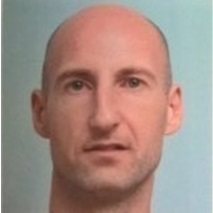 Saeed Younis – Project “PROMIS - Postgraduate Research on Dilute Metamorphic Nanostructures and Metamaterials in Semiconductor Photonics”. Call reference: H2020-MSCA-ITN-2014
Saeed Younis – Project “PROMIS - Postgraduate Research on Dilute Metamorphic Nanostructures and Metamaterials in Semiconductor Photonics”. Call reference: H2020-MSCA-ITN-2014
Saeed Younis is an early stage researcher fellow under the ITN project PROMIS. Saeed is working under the supervision of prof. Antonio Polimeni and his research focuses on “Hydrogenation of dilute nitrides for single photon emitters in photonic crystals”. The aim of the research is the development of a new single photon sources for secure 1.31 and 1.55 telecom applications which will be based on hydrogenated dilute nitride semiconductor nanostructures. The cornerstone of this activity will be represented by a novel method for the fabrication of site-controlled nano-emitters based on the hydrogen-induced passivation of N atoms in (InGa)(AsNP)/GaAs heterostructures. The research is carried out at Sapienza Department of Physics.